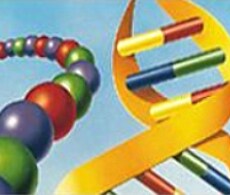Search Thermo Fisher Scientific
Sequencing Reaction for Sanger Sequencing

Cycle sequencing is a simple method in which successive rounds of denaturation, annealing, and extension in a thermal cycler result in linear amplification of extension products. The products are then injected into a capillary. All current Applied Biosystems DNA sequencing kits use cycle sequencing protocols. We have focused on two general categories of sequencing chemistry approaches: Dye Primer chemistry and Dye Terminator chemistry.
Select the BigDye® chemistry right for your application
Life Technologies continues to develop superior Sanger sequencing kits that provide a solution for all your applications and templates. The table below provides guidelines to help you choose between the three main sequencing kits.
| Sequencing Specificity | BigDye® Direct ‡ | BigDye® Terminator V3.1 | BigDye® Terminator V1.1 |
|---|---|---|---|
| All types of sequencing | xx | xx | xx |
| High resolution close to the sequencing primer | xx | – | xx (if using POP-6™) |
| M13 tailed PCR primers and M13 sequencing primer* | xx ‡ | x | x |
| Universal tail primer other than M13 primer | – | x | x |
| Long read (>650 bp) | x | xx | x |
| Mixed base (heterozygote) with ratio 10/50 to 50/50 | xx | x | xx |
| GC-rich, GT-rich, difficult template † | x | x | x |
x Satisfactory † BigDye® Direct, BigDye® Terminator V3.1, and BigDye® Terminator V1.1 will provide good sequence quality for the majority of these templates. In some cases, the dGTP BigDye® terminators have been specially designed for these difficult templates and will provide better results ‡ BigDye® Direct requires the use of M13 tailed primer for the PCR reaction. This kit contains BigDye® Direct PCR Master Mix, BigDye® Direct Sequencing Master Mix to perform the PCR cleanup and sequencing reaction in a one-step reaction, BigDye® Direct M13 Fwd Primer (5′ TGTAAAACGACGGCCAGT 3′), BigDye® Direct M13 Rev Primer (5′ CAGGAAACAGCTATGACC 3′), and Control DNA CEPH 1347-02. * Why use M13 tailed PCR primer or other universal tail primer? For more information, please go to the second tab, Sequencing Primers on the Sanger DNA Sequencing web page. | |||
Sequencing applications and specific requirements
Sequencing of PCR Product (resequencing).
Resequencing is defined as sequencing of DNA molecules followed by comparison to a known or reference sequence. Resequencing or directed sequencing is used for the discovery of sequence variants usually associated with a phenotypic change, for determining evolutionary changes, and/or for biological identification. Resequencing may be focused on coding regions of genes implicated in disease, or it may target the whole genome for the discovery of SNPs and other sequence variations between individuals. Comparative sequencing is usually defined as sequencing a specific region in different species or subspecies to identify highly conserved regions. Resequencing is often carried out by amplifying a specific region of the genome by PCR and then sequencing the PCR fragment from both directions to generate a high-quality DNA sequence. Information about the different strategies for resequencing are described in the Sequencing Chemistry Guide.
Sequencing kit criteria for PCR product sequencing: read first base after the primer, mixed base detection. Using a M13 primer can be a very good solution to streamline the workflow.
For more information on M13 primer, please go to the second tab, Sequencing Primers, on the Sanger DNA Sequencing web page.
NGS Sequence Confirmation
Sanger sequencing is the gold standard for the confirmation of next generation sequencing results. This is typically accomplished by the Sanger sequencing of PCR products that correspond to regions of interest identified using next generation sequencing.
Methlylation Sequencing
Methylation of a CpG residue can be determined by treating genomic DNA with sodium bisulfite that converts non-methylated cytosine to uracil, while methylated cytosine is protected from bisulfite conversion. Comparing the sequence of bisulfite-converted DNA with untreated DNA clearly indicates the presence of methylated C residues, because they appear as C in bisulfite-converted DNA. Nonmethylated C is converted to U (and to T in the sequencing reaction), so it appears as T. In principle, there are two approaches to methylation, depending upon the available information and the research goals: methylation-specific PCR or bisulfite-specific PCR. A researcher performs bisulfite treatment in order to transform an epigenetic event to a detectable, permanent genetic change in vitro, because the original methylation is lost during PCR.
Comparison of sodium-bisulfite treated DNA sequences with sequences obtained from untreated genomic DNA allows the precise identification of all methylated cytosines within a long stretch of DNA. Two options are available for collecting methylation sequencing data. Both options require bisulfite conversion and PCR amplification, but in one method, the PCR fragments are sequenced directly, while in the other method the fragments are cloned and then the clones are sequenced. Methylation sequencing methods is described in the Sequencing Chemistry Guide.
Sequencing kit criteria for methylation sequencing: mixed-base detection.
For Research Use Only. Not for use in diagnostic procedures.